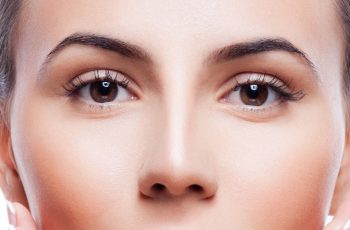If you have been viewing blepharoplasty before and after images, then you understand that drooping eyelids and puffy bags are capable of making it appear as if one is a lot older than they are. As one grows older, the skin on the eyelids stretches further, fat ends up pooling around the eye area, and muscles seem to weaken, thus producing the unsightly bags and saggy lids that several individuals fight to eliminate. Eyelid surgery procedures, like blepharoplasty, are capable of helping to remove all fat deposits from the surrounding of the eye thus creating a look that’s much more vibrant.
What the procedure can do for you
The procedure aims to enhance the appearance of your eyelid. It could turn out great for conditions like;
-
Puffiness in the upper eyelids as a result of excess fat.
-
Excess skin surrounding the lower part of your eyelids.
-
Droopiness in the lower eyelids which bring about the exposure of part of the whites in the eyes.
-
Sagging or loose skin around the eyes which, causes the upper eyelid to become contorted and also disturbs your vision.
What the procedure cannot do for you
The procedure concentrates on eliminating fats and correcting impairments in the eyelids. Is does not fix;
-
Crow’s feet.
-
Dark circles.
-
Sagging eyebrows.
You can undertake the procedure on its own or combine it with other varying facial procedures, like a facelift or a brow lift. This will all depend on the amount you have budgeted for your blepharoplasty cost.
Types of procedures
You should expect to spend between one and three hours before the procedure is complete. For individuals who desire to have surgery performed on both their upper and lower eyelids, they can frequently have both done together at the same time.
Standard procedure: eliminating excess fat and sagging skin
In the standard procedure, fat is eliminated from the upper and lower lids, as well as any excess skin and sagging muscle. A tiny incision is made around the eyelid’s natural crease as well as below the lashes of the lower eyelid, directly. Using the incisions, the skin is then separated from the muscles and fatty tissues that are underneath, while trimming sagging muscles and skin away. After doing that, the incision is then closed by using a fine suture.
Transconjunctival blepharoplasty: removing excess fat
With this procedure, excess pockets of fat are removed from beneath the lower eyelids when there is no excess skin to be removed. Here, the incision is made in the lower eyelid and tiny forceps are used to take out the excess fat. To close the incision up, a dissolvable suture is utilized, thus no scar is left behind. This particular procedure is aimed at individuals who are young and feature skin that is thicker and suppler.
After a blepharoplasty procedure, you will need to make sure that you keep your head elevated a bit for a couple of days. You might have seen this in some blepharoplasty before and after images. Ice could then be used to decrease swelling. You should ensure that the area is kept properly clean. Every individual situation is different, but the ultimate outcome is to have a more youthful look delivered to patients.




